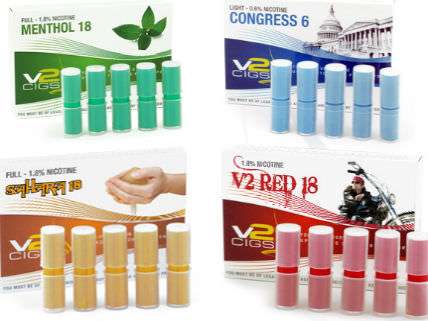The New York Times Warns That Drinking E-Cigarette Fluid Could Become a Fatal Fad Among Toddlers

A story in today's New York Times sounds the alarm about "a dangerous new form of a powerful stimulant" that "is hitting markets nationwide, for sale by the vial, the gallon and even the barrel." This stimulant is "a powerful neurotoxin," warns business reporter Matt Richtel, and "tiny amounts" of it, "whether ingested or absorbed through the skin, can cause vomiting and seizures and even be lethal." This dangerous new drug, he explains, is the nicotine contained in e-cigarette fluid, which already has killed…well, so far just one guy who committed suicide by injecting the stuff. But "reports of accidental poisonings, notably among children, are soaring." They increased "300 percent" from 2012 to 2013!
Another way of putting that: The number of accidental poisoning reports related to e-cigarette fluid increased from about 338 in 2012 to 1,351 in 2013. None of these poisonings was fatal, and most (73 percent) were not serious enough to require hospital treatment. In 2012, by comparison, 311,347 poisoning reports involved analgesics, 221,314 involved cosmetics, 193,802 involved cleaning substances, 96,997 involved anthistamines, 88,694 involved pesticides, 68,168 involved vitamins, and 49,374 involved plants. So if "e-liquids pose a significant risk to public health," as Richtel says, the risk posed by common products such as aspirin, window cleaner, and bug spray is gargantuan.
Richtel concedes that the nicotine levels of "most" e-cigarette cartridges "range between 1.8 percent and 2.4 percent [by volume], concentrations that can cause sickness, but rarely death, in children." But he claims "higher concentrations, like 10 percent or even 7.2 percent, are widely available on the Internet." Contrary to Richtel's implication, 10 percent is higher than 7.2 percent. But never mind. How common are e-cigarette cartridges with nicotine concentrations of 7.2 percent or more? Of the 13 "Top E-Cig Brands for 2014" picked by by SmokeFreeVCU.org, none offers cartridges that strong. The strongest fluid sold by 11 of the 13 companies is 2.4 percent or lower. Vapor Zone offers 3.6 percent. White Cloud sells cartridges in a "Double Extra" strength aimed at the heaviest smokers. These cartridges, which the company describes as "the strongest in the industry," contain 5.4 percent nicotine. Richtel cites two examples of 10 percent solutions, both involving large quantities sold by wholesalers, presumably to customers who dilute the fluid before selling it to consumers.
This exaggeration figures in the article's most memorable warnings. In the third paragraph, Richtel says "a teaspoon of even highly diluted e-liquid can kill a small child." At the end of the article he quotes Lee Cantrell, director of the San Diego division of the California Poison Control System, as saying that "one tablespoon could kill an adult." According to a 2013 article in Archives of Toxicology, "a careful estimate suggests that the lower limit causing fatal outcomes [in adults] is 0.5–1 g of ingested nicotine"—i.e., at least 500 milligrams. To get that dose from a tablespoon (15 milliliters), the concentration would have to be 33.3 milligrams per milliliter, or more than 3.3 percent by volume, which is far from typical.
Richtel does raise some legitimate concerns. He worries that bottles of e-cigarette fluid are "kept casually around the house" and that children "may be drawn to their bright colors and fragrant flavorings." Adults obviously should keep e-cigarette liquid, like any other potentially dangerous substance, away from small children. But Richtel seems determined to portray this particular hazard, which by his own account has not caused a single accidental death, as fundamentally scarier than familiar household products that account for many more poisonings. Perhaps that is because e-cigarettes are relatively new. Or perhaps Richtel, like many activists and public health officials, is offended by the superficial resemblance between vaping and smoking, the very thing that makes e-cigarettes such a promising harm reduction tool. Either way, his reaction is not rational. But I suppose putting risk in perspective is more than we can reasonably expect from a newspaper that portrays energy drinks as lethal.


Show Comments (24)